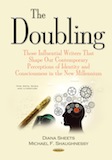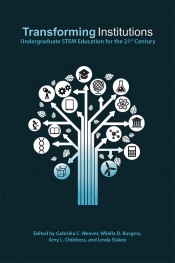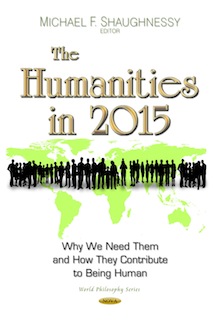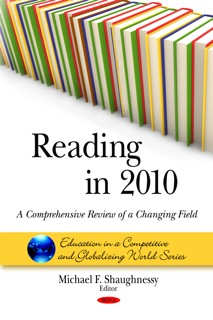What Do Carl Schmitt’s "The Concept of the Political" and Saul Alinsky’s "Rules for Radicals" Reveal About the Obama Narrative?
Copyright © 2010 by Diana E. Sheets
More than any other president, Barack Obama and his administration have chosen to conduct a perpetual campaign for his presidency by focusing on narrative. Why? Because party strategists are convinced that the Democratic loses in previous political campaigns were due not to a failure of policy initiatives but rather a failure to engage the emotions of voters in an overarching narrative (see my August, 2008 essay, “Politics & Literature: Framing the Political Narrative for Victory in the 2008 Presidential Election, http://www.literarygulag.com/blog/show/22). Win the hearts of voters with a compelling story, so the reasoning goes, and electoral success is sure to follow. But this 21st Century president, who inspired dreams of a post-racial, post-partisan, post-divisive, post-national, administration nourished on the twin mantras of hope and change, has watched political support plummet in anticipation of the November, 2010 election as the economy has faltered, fears of a healthcare debacle have increased, concerns that the national debt is spiraling out of control have grown, public resistance to our continued military effort in the Middle East has mounted, and failed environmental initiatives have caused some Americans to reassess this administration’s commitment to the Green cause.
This month’s essay will examine the relevance of political theory, specifically Carl Schmitt’s The Concept of the Political (translated by George Schwab, The University of Chicago Press, 2007, first published in 1996), and practice, namely Saul D. Alinsky’s Rules for Radicals: A Pragmatic Primer for Realistic Radicals (Vintage Books Edition, October 1989). However, before addressing specifics regarding theory and application, Literary Gulag will revisit the issue of narrative.
WHAT IS THE NARRIATIVE?
Dan Payne, writing for The Boston Globe, defined narrative as “an overarching goal that explains, unifies, and gives motive to his [Obama’s] multiple initiatives.” For Nick Morgan, writing for Forbes, it can be defined in cognitive terms, “Because our brains retain stories better than any other form of information, we develop shortcuts to handle all the information we need to in the modern world. The most important shortcut is the narrative. The narrative is the quick story that has developed over a long period of time for any organization, company or important public figure. It’s the way we store and organize the information” (cited in Matt Welch’s “The Obama ‘Narrative’ Narrative,” Reason Magazine, March 18, 2010, http://reason.com/archives/2010/03/18/the-obama-narrative-narrative, which also appeared in The Wall Street Journal online addition, Federation Feature, March 25, 2010).
Part of the challenge of the Obama Narrative is that there is no single defining story governing the presidency. Pundits appear to assign the label narrative to every major policy speech given by the President and then gauge the public’s response to determine the effectiveness of his delivery. The result is a moment-by-moment, zig and zag, thrust and parry that allows for accommodations to allies, entreaties to independents, attempts to forestall challenges by Republicans, and efforts to appeal to a variety of interest groups who do not necessarily share an embracing worldview. Consequently, even a single narrative may contain multiple points of view, each potentially at odds with the rest.
This fractured narrative resembles a postmodern novel, which is clever—possibly dazzling it its complexity, its contradictory strands, its relativistic perspectives—and hollow since it contains no foundational belief system, no overarching truth from which core values emanate. It is an empty vessel, devoid of an authentic story. Given that the supporters of Obama appear unwilling to risk their lives in defense of any principles other than those emanating from self, they may aptly be characterized as decadent since there is nothing that resonates for them beyond the singularity of “Me.”
Therein lies the vacuous character of the postmodern Obama narrative. Without a fundamental truth to guide policy or social initiatives, bound by disparate differences more than a universal commonality, the Obama narrative is an empty vessel, absent a set of core values universally shared by most Americans—if indeed there can be said to be any principles uniting us today.
Which, of course, is not to minimize the challenge inherent in politics, namely, of reconciling the lofty dreams of campaign rhetoric against the gritty practice of day-to-day governance. The result, as Mario Cuomo, former Governor of New York astutely surmised, “You campaign in poetry. You govern in prose” (Robert Schmuhl, “Obama’s So-Called Narrative Problem: There’s More to That Story,” Politics Daily,
As the economy stalls and support for Obama falters, the pundits scramble to explain the failure of the Obama narrative. As early as last April, Robert Brownstein, reporting for the National Journal, quoted Robert Reich, former Secretary of Labor for President Clinton, that the Obama administration was not offering “a larger narrative” that accounted for the economic crash and countered Conservative claims “that its problems were founded in ‘Big Government’” (“Obama’s Economic Narrative Gap,” April 17, 2010, http://www.nationaljournal.com/njmagazine/nj_20100414_3015.php). By contrast, the Republican narrative, as exemplified by Senate Republican Leader Mitch McConnell in his hard-hitting response to financial reform, was driving home the message that European-style socialism of the Obama administration was undermining
Even The New York Times, in effect the national newspaper advancing the policies of the Obama administration, has joined the nattering nays. Paul Krugman recently decried the failure of the Obama narrative for refusing to implement a full-throttled Keynesian economy. (“The Economic Narrative,”
In assessing the narratives competing for dominance within the Obama Presidency, the Global Language Monitor (
As of June, 2010, five distinct themes were vying for dominance in the “Obama Narrative 2.0,” which the
1. “Obama as Oil Spill Enabler”
2. “Obama as the Big Spender”
3. “Obama as the Chicago-style pol”
4. “Obama as out-of-touch or aloof “
5. “Obama as HealthCare Reformer”
These headline narratives are not so different from the “7 Stories Obama Doesn’t Want Told” advanced on November 30, 2009 by John F. Harris writing for Politico, which are paraphrased as follows: Obama acts as if it is monopoly money, Less Leonard Nimoy more Bill Clinton, The taint of corrupt Chicago politics, The weakling Obama, U.N. globalism at the expense of American Exceptionalism, Commander-in-Chief Pelosi, and The narcissistic Obama (http://www.politico.com/news/stories/1109/29993.html).
While these narratives are perhaps helpful in providing a sense of some of the themes, pro and con, that may sway voters on November 4th, they are no substitute for substantive policy analysis. Nor do they take into account more recent issues: our stagnating economy with its persistently high unemployment that is contributing to our growing deficit, American ambivalence about maintaining our forces in Iraq, concern about the effectiveness of routing Al-Qaeda and its Taliban supporters in Afghanistan, and the emotionally charged issue of whether an Islamic community center should be built in Manhattan two blocks from Ground Zero.
The reduction of complex issues to headline narratives, the prevalence of the 24-hour-news cycle with its bursts of breaking news, the conscious blurring of entertainment, opinion, and news as it intersects with reality television and Internet blogs in order to tap into the emotional lifestyle preferences of perspective voters. This has resulted in Americans increasingly seeking their “news” content from entertainment news (Colbert Report/Daily Show), cable opinion news (Fox, MSNBC), and radio spin commentary (NPR, Limbaugh) to the detriment of more conventional outlets (CNN, Politico, NewsHour with Jim Lehrer) and traditional print sources (The New York Times, the Wall Street Journal, and the Financial Times), the latter of which have also become increasingly politicized at the expense of dispassionate analysis in order to bolster their faltering market share. The phenomenon of commingling opinion and entertainment news was vaticinated by Paddy Chayefsky in his film Network, released in 1976.
What happens, however, if we step back for a moment from narrative and policy considerations influencing the upcoming November election to consider the political theory driving partisan politics? How would our assessment alter if we analyzed contemporary American politics from the perspective of Carl Schmitt, one of the greatest political theorists of the 20th Century, by examining the arguments presented in his book The Concept of the Political? What if, for example, we step back and instead of asking “What is the Obama narrative and why isn’t it working?”, we pose a more intriguing question: “How might Schmitt’s analysis cause us to reassess the Obama narrative and its failure to persuade?”
But before considering Carl Schmitt’s analysis, Literary Gulag will digress momentarily to consider the global context of Obama’s campaign for the presidency by examining briefly the circumstances surrounding his speech in July of 2008 at the Victory Column in
HISTORICAL BACKDROP
The post-partisan, post-national, global narrative framed by Barack Obama in his speech given in Berlin in July, 2008 can be distilled down to his one-sentence, sound bite, “People of Berlin—people of the world—this is our moment. This is our time” (Jason Horowitz, “Obama’s Berlin Speech, The New York Observer,
The problem was, as John Bolton, former
The wall fell because of a decades-long existential struggle against one of the greatest totalitarian ideologies mankind has ever faced. It was a struggle in which strong and determined
Not surprisingly Robert Kagan countermanded Francis Fukuyama’s argument with his own essay “End of Dreams, Return of History,” published in Policy Review in August, 2007 (No. 144, http://www.hoover.org/publications/policy-review/article/6136) and subsequently elaborated and published the following year by Knopf as The Return of History and the End of Dreams. Kagan’s argument is persuasive if unpopular to Liberal sensibilities and the Obama global narrative by suggesting that history had not come to an end. Conflict has resumed. Clearly, therefore, we are not residing in “a world that stands as one.” Global politics has not been transformed. Nation states remained vital and continue to make their individual territorial and political claims as is evident in the competitive rivalries of “
Which brings us to The Concept of the Political, published in 1927 as an essay before it was subsequently revised and expanded as a book. For the purposes of this analysis, Literary Gulag is relying on the 1932 edition translated by The University of Chicago Press. As a legal scholar Carl Schmitt gained renown in
The foundational question of political theory, namely, “What is politics?” lies at the heart of The Concept of the Political. Schmitt then reframes the question to ask, “What is ‘the political’?”, by which he means the criterion by which political decisions are made (Mark Lilla, “Carl Schmitt,” The Reckless Mind: Intellectuals in Politics, New York Review Books, 2006, 56).
For Schmitt, the fundamental dichotomy of politics is the distinction between friend and enemy. It is the sine qua non of politics. This enmity represents the foundational building block of politics. It reflects our willingness to take responsibility, to take a moral stand, to fight, if need be, to kill. The moral imperative of politics, for Schmitt, implies conflict. Conflict, in turn, must have the potential to fight, if need be, to death. For Schmitt, the apogee of politics, that “Ah ha!” moment, is achieved when “the enemy is, in concrete clarity, recognized as the enemy” (The Concept of the Political, 67). He leaves no doubt that the political enemy represents “the other.”
The political enemy need not be morally evil or aesthetically ugly; he need not appear as an economic competitor, and it may even be advantageous to engage with him in business transactions. But he is, nevertheless, the other, the stranger; and it is sufficient for his nature that he is, in a specially intense way, existentially something different and alien, so that in the extreme case conflicts with him are possible. (27)
For Schmitt, the “total state” is one in which policies and actions have become politicized. By way of example, not only is economic policy an arm of the political state enforcing the friend/enemy distinction through its conduct of policy but also nominally independent businesses since the “total state” has put “an end to the principle that the apolitical economy is independent of the state and that the state is apart from the economy” (25).
“The political,” according to Schmitt, “is the most intense and extreme antagonism, and every concrete antagonism becomes that much more political the closer it approaches the most extreme point, that of the friend-enemy grouping” (29). This enmity, he suggests, as a political phenomenon, exists only between groups, not individuals (28).
For Schmitt, “War is armed combat between organized political entities; civil war is armed combat within an organized unit” (32). The extent, he argues, to which the state is a “decisive entity” rests on its political character, which is predicated on the distinction between friend and enemy with the implied threat of combat that could result in killing (32-3, 45). “The friend, enemy, and combat concepts receive their real meaning precisely because they refer to the real possibility of physical killing. War follows from enmity. War is the existential negation of the enemy” (33).
Schmitt suggests that all social forces—“religious, moral, economic, ethical, or other antithesis”—become political if “sufficiently strong to group human beings effectively according to friend and enemy” (37). No nation, he suggests, can eliminate the “the distinction of friend and enemy by declaring its friendship for the entire world or by voluntarily disarming itself” (51-2). For in so doing, the world will not miraculously be transformed into a single, peaceful entity. (52) Should a people abandon their political identity, Schmitt argues, their fate will be to be subsumed by another political entity, one that “will assume these trials by protecting it against foreign enemies and thereby taking over political rule” (52).
In the final segment of this essay, Literary Gulag will examine some of the central arguments of Saul Alinsky’s Rules For Radicals. Many conservative commentators, including Colin A. Hanna, who as president of Let Freedom Ring has been a frequent speaker at Tea Party rallies, have argued that Obama borrows directly from Rules for Radicals. Thus, Hanna suggested, “Since taking office, Obama has not ceased engaging in activities that could derive from Alinsky’s playbook” (“Obama Takes a Page From Alinsky Handbook” Newsmax,
As Alinsky emphasized, Rules For Radicals is about pragmatism, ordinary steps that increase the likelihood of radicals gaining institutional power, rather than Marxist-Leninist doctrinal ideology. Rules for Radicals is a handbook for achieving social revolution presented in the guise of a how-to primer for winning the hearts and minds of America, all the while maintaining “a passive, affirmative, non-challenging attitude toward change among the mass of our people” (xix). For an organizer “working in the system” is a necessary precondition to building acceptance by Americans, which Alinsky characterizes as “the reformation essential to any revolution” (xix). He readily acknowledges that “radical pragmatism,” that is, working “to build an opposition [sic] political base,” initially necessitates working “the system” since, as he puts it, “there is no other place to start from except political lunacy” (xxi).
Lest his cadre of radical organizers fail to get the message, Alinksy adds, “those of us who want revolutionary change” must understand “that revolution must be preceded by reformation” (xxi). “A reformation,” he counsels, suggests “disillusionment with past ways and values” (xxii). The path to victory is achieved through grass-roots organization. This is how radical organizers build their powerbase. The reformation is the bridge that will assist in transitioning from the old to the new. Organizing political interests at party conventions is part of that transitional framework. Thus, Alinsky urges his followers to “Go home, organize, build power and at the next convention, you be the delegates” (xxiii). “Keep the pressure on,” he counsels. Adding, “Action comes from keeping the heat on” (xxiii).
If these efforts are successful, Alinsky argues, victory will be near at hand. He points out that John Adams understood the importance of altering perceptions before the onset of a revolution when he wrote, “The Revolution was effected before the war commenced” (xxii). This change, he noted, was founded “in the hearts and minds of the people . . . . This radical change in the principles, opinions, sentiments and affections of the people was the real American Revolution” (xxii, from a letter John Adams sent to Hezekiah Niles, editor of the Weekly Register, dated February 13, 1818, see The Works of John Adams…, edited by Charles Francis Adams, Little Brown and Co., 1856, Vol. 10, 282-3. The above quotations, from the correspondence of John Adams cited by Alinsky, have been slightly altered with minds and hearts inverted and some minor changes in punctuation). Without this preconditioned alteration in worldview, Alinsky contends, “a revolution . . . would collapse or become a totalitarian tyranny” (xxii).
Certainly, no one would confuse Schmitt’s high political theory with Alinsky’s tactical instruction manual. Nevertheless, what unites both the conservative and the radical is the understanding that the methods governing the political game constitute warfare and that winning entails the possibility of killing. In the opening quote that begins the first page of Chapter I, Rules for Radicals, immediately below the title “The Purpose,” is a citation from
In narratives of political warfare, analogies to literature (the Old Testament) and literary criticism (supplied in this instance by Henry James) are never far removed. “Life is, in fact, a battle.[…] Evil is insolent and strong; beauty enchanting but rare; goodness very apt to be weak; folly very apt to be defiant; wickedness to carry the day . . . . ” (Henry James Jr., published in French Poets and Novelists, Macmillan and Co., 1878, 318, cited in Rules for Radicals, 14).
Nevertheless, Alinsky would never mistake politics for literature. Rules for Radicals is a primer about the political pursuit of power, rather than the motivation or consciousness that is the impetus for the actions of characters. Indeed, not for nothing does Alinsky cite Disraeli, the consummate outsider politician who, nonetheless, succeeded in becoming elected as leader of the Conservative Party in Britain in 1868, “Political life must be taken as you find it” (Alexander Charles Ewald, The Right Hon. Benjamin Disraeli, Earl of Beaconsfield, K.G. and His Times, Vol. II, William Mackenzie, 1882, 587, cited in Rules for Radicals, 14).
The substance of the “how-to” primer Rules for Radicals consists of two sets of rules relating to the “ethics” and “tactics” for achieving revolution. In his chapter “Of Means and Ends” [ethics], Rule 3 dictates that “in war the end justifies almost any means” (29). Later, Alinsky explicitly states that for him ethics “is doing what is best for the most” (33). In his chapter “Tactics,” the connection between Schmitt and Alinsky is clear. Rule 3 declares, “Wherever possible go outside the experience of the enemy. Here you want to cause confusion, fear, and retreat” (127). Alinsky’s “Tactics” cites approvingly the brutally effective Civil War campaign of General William T. Sherman against the Confederates (127). Rule 4 of “Tactics” counsels radicals to insist that “the enemy live up to their own book of rules” (128). But it is Rule 13 of “Tactics” that for many critics of President Obama defines the strong-arm political tactics of his administration, “Pick the target, freeze it, personalize it, and polarize it” (130), a dehumanized attack strategy that some have argued is more appropriate for creating scapegoats and facilitating mob rule than nurturing democracy (James Lewis, “Obama, Alinsky, and Scapegoats,” American Thinker, April 24, 2009, http://americanthinker.com/2009/04/obama_alinsky_and_scapegoats).
Rules for Radicals is a delineation of ethics and tactics for political warfare overlain with the psychological strategy necessary for achieving victory. It is about winners and losers. It is about knowing your enemy, understanding his (or her) tactics, and using whatever means necessary to ensure victory and that includes the implied threat of killing. But the most potent weapon of the political organizer in that critical transitional stage, what Alinsky refers to as “the reformation,” when the hearts and minds of Americans are yet to be won and they have to be coaxed to relinquish Republican institutions in exchange for the dreams of social redistribution of wealth and power, is that the political leader appear reasonable, flexible, amenable, humorous, and—dare we say it?—empathetic (xix, 11, 72-5, 79, 91, 165-6). For it is the humanizer who deflates oppositional will. Or in Alinsky’s own words, “the free-society organizer is loose, resilient, fluid, and on the move in a society which is itself in a state of constant change. To the extent that he is free from the shackles of dogma, he can respond to the realities of widely different situations our society presents” (11).
For the community organizer, the desired outcome is the rule of many at the cost of exceptionalism. That is the modus operandi for Rules for Radicals. In the age of the demotic the interest of the common prevails at the expense of the exalted. Truth and excellence are the casualties (consult Jacques Barzun’s, “Demotic Life and Times,” From Dawn to Decadence: 500 Years of Western Cultural Life, 1500 to the Present, 2000, 773-802). Nor does the imposition of popular will factor in the social costs associated with the jettisoning of “elite” science and technology, which produce innovations that generate wealth and prosperity that vastly improving the material lives of our citizenry, in favor of social welfare programs. For make no mistake despite the rhetoric of the radical organizer, the loss of capital investment in pump priming our economy will result in our diminished global competitiveness, thereby severely hampering the prosperity or ordinary Americans for years to come.
The end game for Alinsky, as delineated in Rules for Radicals, is a redistribution of power and economic resources to the many regardless of qualifications and contributions. His strategy is consistent with the theoretical arguments presented by Schmitt in The Theory of the Political.
Next month, Literary Gulag will examine the extent to which President Obama’s narrative and the policies of his administration have been governed by this friend/enemy dichotomy. Literary Gulag will then assess whether Rules for Radicals has become the operative handbook for political warfare employed by the Democratic Party before making a prognosis regarding the November, 2010 elections.









